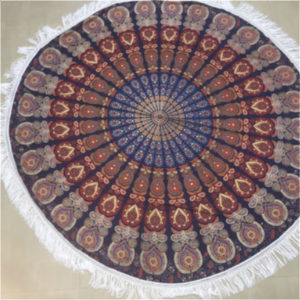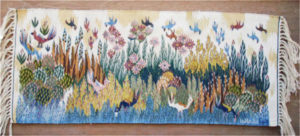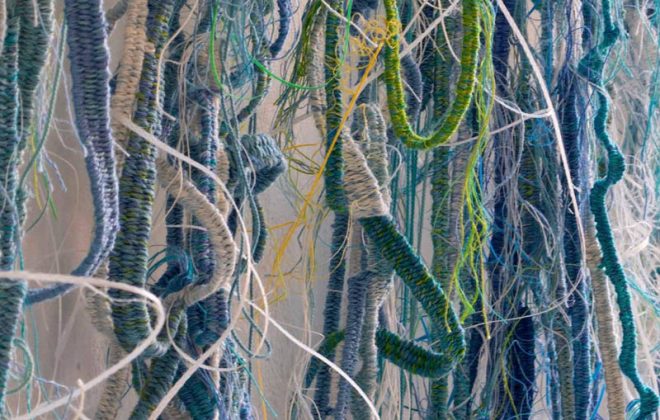I hate fringes!
When I say I hate fringes, of course the ones I hate most are the artificially added ones to non-tapestries that call themselves tapestries, such as the first one illustrated. However, many true tapestries also show fringes, the warp yarn which has not been turned to the back of the piece. Let me explain my reasons.

Roundie Mandala Tapestry Gypsy Beach Throw
Among the tapestry workshops I most admire in the world is the one founded in 1952 by Ramses Wissa Wassef in the village of Harrania near Cairo, Egypt. Boys and girls as young as ten were taught to weave. They were encouraged to look at the world around them and to compose directly on the loom as they wove their tapestries. The results are fresh and charming.

“Cacti” by Gyhan, Wissa Wassef workshop, 2013, cotton weaving, 0.33m x0.79m
With the woollen tapestries, the fringes are turned to the back, but for some reason, with the cotton ones, the warp yarns are knotted and allowed to show. Why do they make this distinction? For me, it devalues the tapestries, making them seem more like rugs than the works of art they really are.
Some tapestry weavers even emphasise the fringe by doing elaborate knotting of it. Again, I feel that this takes away from the image within the tapestry, both by drawing attention to the edges and by suggesting that it is a functional craft object rather than a work of art.
In a very few cases I concede that the fringe may have a point – say if the tapestry is ‘about’ fringes and possibly also has them within the tapestry. But in virtually all cases, the tapestry is diminished if it is not treated as art. Its textile qualities are present in its texture and materials, in the way it hangs, etc, and leaving the warps showing cheapens the piece as it overemphasises its craft qualities.


